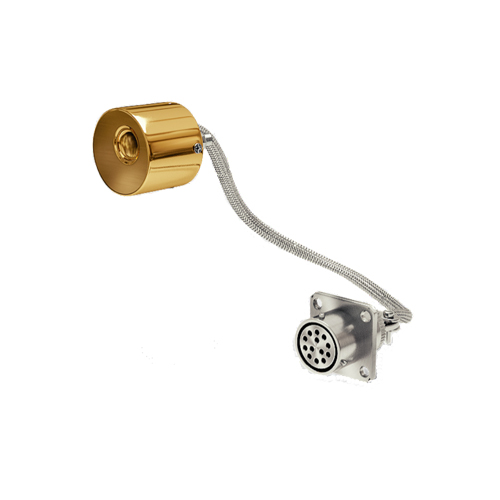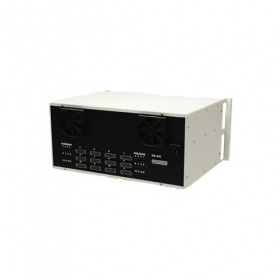
The MK20 TQCM is a proven flight performer, and has been a popular model for commercial use in vacuum chambers. If you are interested in the MK20 also take a look at its successor, the MK26. All MK 20s come standard with a peltier heat exchanger providing both heating and cooling to the crystals and a temperature sensor to report the current crystal temperature. The MK20s are customizable to your application, having three MK20 models to choose from:
The MK20 has three design configurations:
The MK20-1 is our Standard unit and has a distinguished flight history. It requires 6.35 watts peak power and 100mW when the peltier is not in use. The operating temperature range is from -60°C to 80°C and has a customer selected option of a 10 or 15 MHz crystal configuration.
The MK20-2 is the Sub-Micron unit which utilizes smaller diameter and higher frequency crystals, up to 50MHz. This allows the measurement of contamination down to 0.02 monolayer / Hz. It requires 6.35 maximum watts of power. The temperature range is from -60°C to 80°C.
The MK20-3 is our Low Power Peltier unit. The low power model is ideal for flight use. It uses only 3.3W peak. This is particularly useful for integration into power-limited spacecraft if a somewhat reduced temperature range of ∆T=58°C can be tolerated. The temperature range is from -38°C to 80 °C.
When used in a vacuum chamber, the MK20 TQCM is used with a QCM Research Model 2000 Control/Data Acquisition Unit. The M2000 is able to handle up to twelve MK20 TQCMs at one time, and communicates with a host computer over an industry standard RS 232 serial link.
When used in flight, the MK20 TQCM is teamed with a QCM Research Model 3000 Flight Controller. The M3000 is modular in design and can control two QCMs per module. The modules can be stacked up to four modules or eight QCM channels or can be spread out around the spacecraft.
Selecting from available crystal frequencies can further enhance sensitivity or mass measurements. MK20 TQCMs can be flight approved and have flight history. We often custom build MK20s to the customer’s needs. Call to discuss how we can build a MK20 TQCM System for you.
Diagrams
Specifications
| Sensor Output | Beat frequency 1 to 100 KHz | |
| Temperature Range | MK20-1,-2,-3,-4 -199 to +100°C w/ temp-control off, MK20-1,-2, -60 to +80°C w/ temp-control on MK20-3 -38 to +80°C w/ temp-control on | |
| Signal Amplitude | >6 to 10 Vp-p | |
| Voltage Sensitivity | <23 Hz/V | |
| Output Impedance | 12KΩ | |
| Pressure Range | Ambient to Hard Vacuum | |
| Supply Voltage | 9 to 11 VDC (10VDC Nominal) | |
| Continuous Power Requirement | 120 mW @ 10 VDC | |
| Peltier Heat Load | MK20-1 = 6.25W, MK20-2 = 6.25W, MK20-3 = 3.2W | |
| Temperature Sensor | 1,000 ohms Platinum Resistance Thermometer (PRT) | |
| Weight | ~23 grams (Excluding cable) ~55 grams (Including cable) | |
| Field of View | 70.5° Half Angle | |
| Crystal Frequencies | 10 MHz Crystals | 15 MHz Crystals |
| Mass Sensitivity | 2.26 x 108 (Hz/gm)cm2 | 5.09 x 108( Hz/gm)cm2 |
| Frequency Range | To ~ 100KHz | To ~ 150KHz |
| Mass Range | 4.42 x 10-4gm/cm2 | 2.95 x 10-4gm/cm2 |
| Model No. | Part No. | Frequency Capability |
Active Temperature Range (Heat Sink at 20°C) |
Power Requirement |
| MK 20-1 | 96-2026-01 | 10 to 15 MHz | -60 to 80°C | 6.25 W |
| MK 20-2 | 96-2026-02 | 15 to 50 MHz | -60 to 80°C | 6.25 W |
| MK 20-3 | 96-2026-03 | 10 to 15 MHz | -38 to 80°C | 3.2 W |

 Model 2000
Model 2000
 MK-10
MK-10